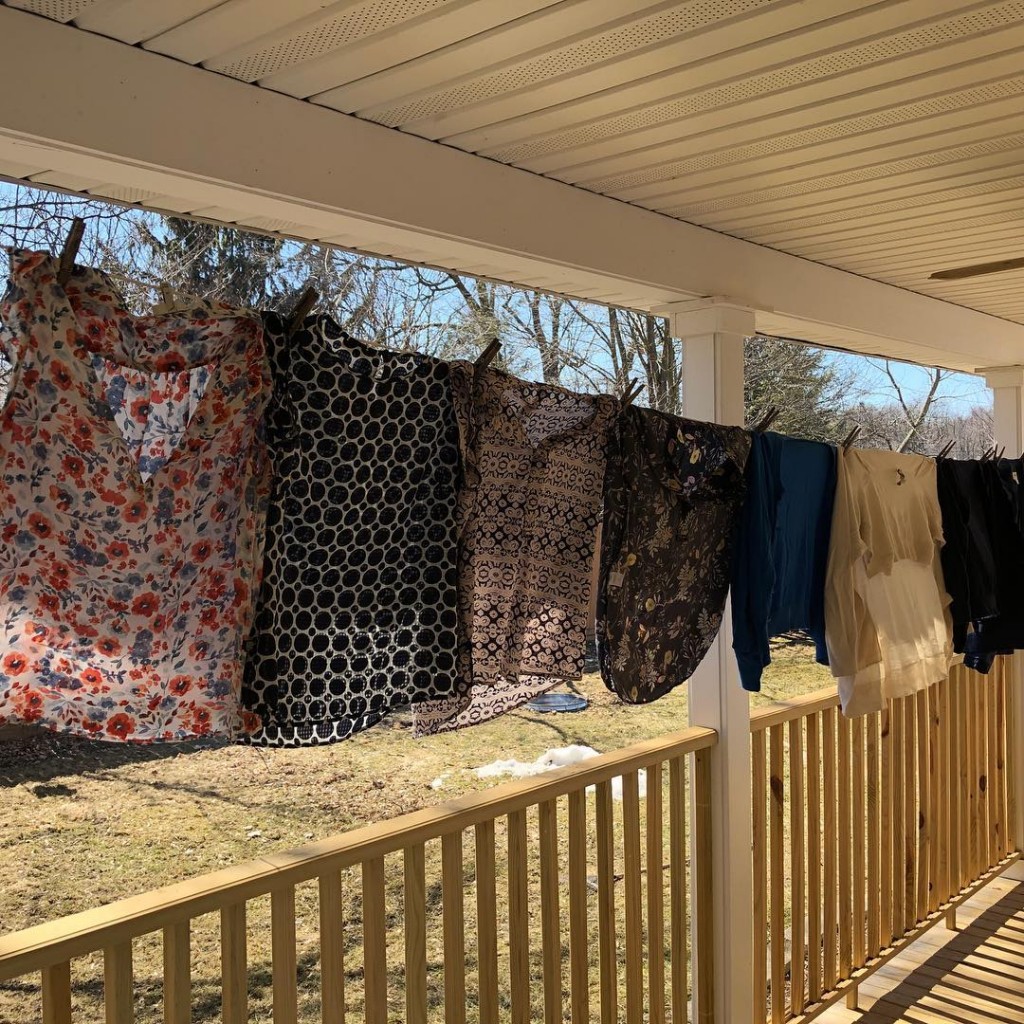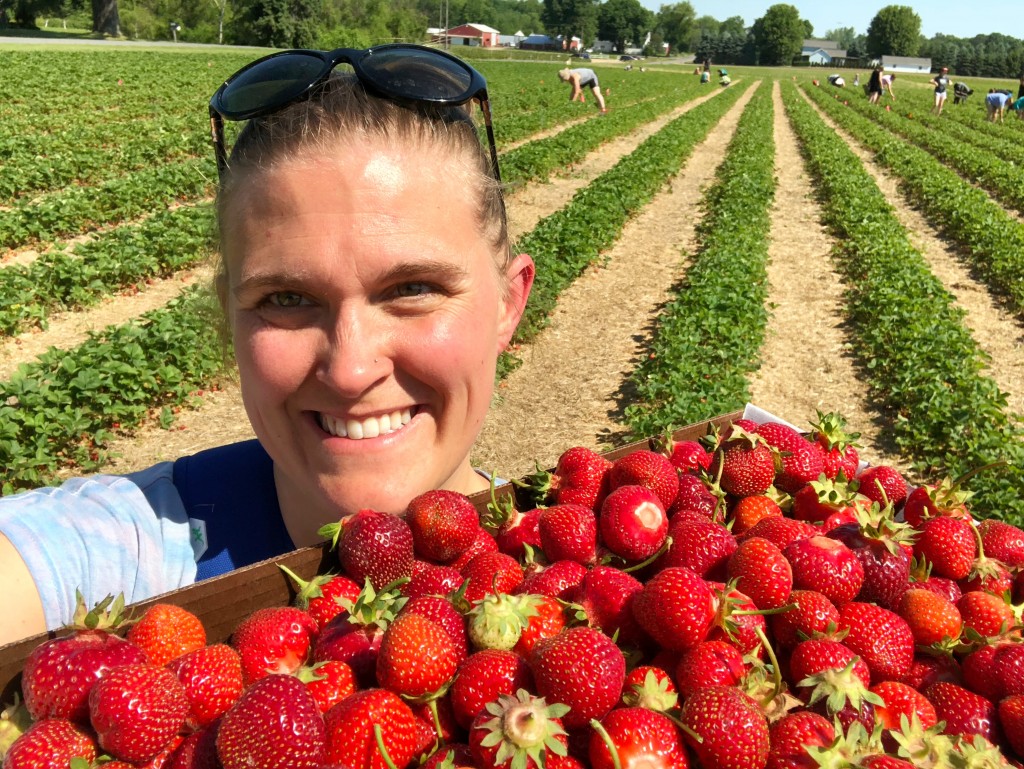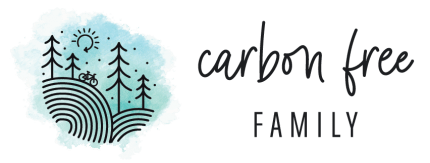I was having dinner with a bunch of old friends a couple of weeks ago when my friend, Jacob, leaned over the table and said to me out of the blue, “OK, Erin…. What 5 things can I do to stop destroying the planet?” What a GREAT question! Of course I gave him a couple of my favorite tips over our burgers, but the question got me thinking… what are my top 5 relatively simple, yet actually impactful, changes that will help everyone live a more sustainable life?
There’s one thing I know for certain: we can’t consume our way to a life that doesn’t destroy the planet, so you won’t find a quick list of things to buy in any of my blog posts. That means my top five is a list of simple ways to change your mindset and habits that will help you tread lightly on the planet. So… after a couple weeks of thoughtful reflection, here’s my list of five great sustainability {mindset} swaps (in order of importance, according to me, which means they’re based on science and anecdotal lessons learned from friends and clients):

1. Drive less, walk or bike more. Take a good hard look at your car before you drive somewhere. Can you walk your kids to school instead of driving them? Can you walk or bike to the grocery store? If your gut reflex is no, I encourage you to think a little more creatively… a backpack is great for carrying groceries home on foot and a bike trailer is your friend when you’re biking. These activities will reduce your impact on the earth (mostly carbon emissions, which are causing global warming) AND make you healthier! Sure, it might take you a little longer than driving, but can you eliminate time at the gym because you’re so much more active during the day? This is an important swap in your daily life and especially important when you’re making big life decisions, like taking a new job or buying a new house. In those big moments, consider driving vs walking/biking as an important factor in your decision.
2. Keep looking at your car and calculate your miles per gallon (mpg) efficiency, if you don’t already know it. This tells you how efficient your engine is at driving you where you need to go per gallon of gas it burns. You want this number to be as high as possible. For example, the average truck, minivan or SUV gets about 17.5 miles per gallon of gas. An average car gets closer to 25 mpg and a motorcycle gets around 45 mpg (the source for all of these numbers is here). When you’re ready to replace your car, buy the most efficient car you can afford (that’s one with the highest mpg rating). I’m a huge fan of electric vehicles (EVs) and purchased a Tesla Model S in February 2020. You can read about my experience in blogs here and here. If you want to talk more about EVs, please leave your questions and comments below!

3. While we’re talking about electricity, do you know where yours comes from? Electricity in the US is generated, on average, from the following resources (all of the following info is from US Energy Information Administration (EIA) which has a lot of great resources if you want to learn more):
- 40% natural gas
- 19% coal
- 20% nuclear
- 20% renewables (like wind, solar, and hydro)
- 1% petroleum
If you want to get more specific to your state or electrical grid, you can learn more here (it’s another great page on the EIA website). Learning more about electricity is great, but my recommended action here is to call your electric utility company and request 100% renewable electricity. Most utilities have a program that lets you pay a little extra (for reference, my monthly bill increased $10 when I made the switch) for 100% renewable electricity. I know… you have lots of questions… like “how can I just buy renewables? Am I actually getting renewable electricity delivered to my house???”
The short answer is this: when you subscribe to green electricity programs like this you’re incentivizing your local utility to invest in more renewable electricity projects. This means they’ll build more solar arrays or install more wind turbines. You’re really buying a renewable electricity credits, which means that an equal amount of “extra” green electricity is being produced on your behalf. No, the utility can’t send this electricity directly to your house, but you are part of the overall move to a greener and more renewable electricity grid and you are voting with your dollars every single month. Still have questions? Drop them in the comments below and I’ll help you find the answer!

4. Embrace minimalism. Do you really need all the stuff in your life? Does it really make you happier? For me, minimalism is a great mindset to truly embrace the Reduce in the decades old mantra “Reduce. Reuse. Recycle.” Yes, recycling is important and you should do that too, but moving beyond recycling and buying less stuff is where the magic happens when trying not to destroy the planet.
Think about it this way: every single thing you own was created from the Earth’s precious resources. These resources were mined, grown or harvested from somewhere, transported to a processing site where they were turned from the raw material into a more usable form, transported to another manufacturing site where they were combined into the thing in your hands, transported to a store or warehouse, and then transported again to you. And that’s probably an oversimplified version of the truth. This happens over and over again for every single object in our lives. With this in mind, I ask again… Do you really need all the stuff in your life? What could you choose to live without? What would actually make you happier NOT to own?
If you’re ready to embrace minimalism, there are TONS of resources out there for you to explore, but some of my favorites include: The Minimalists blog, the book Soulful Simplicity by Courtney Carver, and the Our Minimalist Lifestyle Facebook Group. Please share your favorite resources in the comments!

5. Stop wasting food. Each year, the average American throws away more than 200 pounds of food at a cost of more than $1,600 per family! And if food waste were a country, it would be the third largest emitter of greenhouse gases (GHGs, the major cause of climate change), behind the Unites States and China. Farming of meat animals and food transportation are additional contributors of GHG emissions, so I’ll give bonus points for eating less meat and more local food.
There are lots of great strategies you can use to reduce food waste in your home. Some of my favorites include
- create a weekly meal plan
- buy less during each trip to the grocery store
- organize your food storage areas (fridge, pantry, freezer) so you can find your food easier
- learn about best by, use by, and other perishable food labels to avoid spoilage
- freeze leftovers and other perishable items before their expiration date
Here they are, all together once more:
- Drive less, walk and bike more
- Buy the most efficient car you can afford
- Buy renewable electricity
- Embrace minimalism
- Stop wasting food

Do some or all of these recommended {mindset} swaps resonate with you? Share your thoughts and experiences in the comments!
Looking for more? If you’ve already made these swaps and are ready to make deeper change, I highly recommend calculating your ecological footprint and using the results to identify your biggest opportunities.
